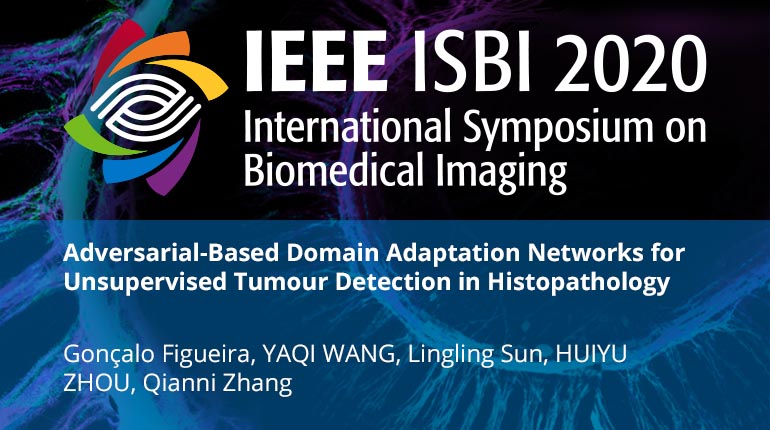
Already purchased this program?
Login to View
This video program is a part of the Premium package:
Adversarial-Based Domain Adaptation Networks for Unsupervised Tumour Detection in Histopathology
- IEEE MemberUS $11.00
- Society MemberUS $0.00
- IEEE Student MemberUS $11.00
- Non-IEEE MemberUS $15.00
Adversarial-Based Domain Adaptation Networks for Unsupervised Tumour Detection in Histopathology
Developing effective deep learning models for histopathology applications is challenging, as the performance depends on large amounts of labelled training data, which is often unavailable. In this work, we address this issue by leveraging previously annotated histopathology images from unrelated source domains to build a model for the unlabelled target domain. Specifically, we propose the adversarial-based domain adaptation networks (ABDA-Net) for performing the tumour detection task in histopathology in a purely unsupervised manner. This methodology successfully promoted the alignment of the source and target feature distributions among independent datasets of three tumour types - Breast, Lung and Colon - to achieve an improvement of at least 17.51% in accuracy and 18.22% in area under the curve (AUC) when compared to a classifier trained on the source data only.
Developing effective deep learning models for histopathology applications is challenging, as the performance depends on large amounts of labelled training data, which is often unavailable. In this work, we address this issue by leveraging previously annotated histopathology images from unrelated source domains to build a model for the unlabelled target domain. Specifically, we propose the adversarial-based domain adaptation networks (ABDA-Net) for performing the tumour detection task in histopathology in a purely unsupervised manner. This methodology successfully promoted the alignment of the source and target feature distributions among independent datasets of three tumour types - Breast, Lung and Colon - to achieve an improvement of at least 17.51% in accuracy and 18.22% in area under the curve (AUC) when compared to a classifier trained on the source data only.
 Cart
Cart Create Account
Create Account Sign In
Sign In





